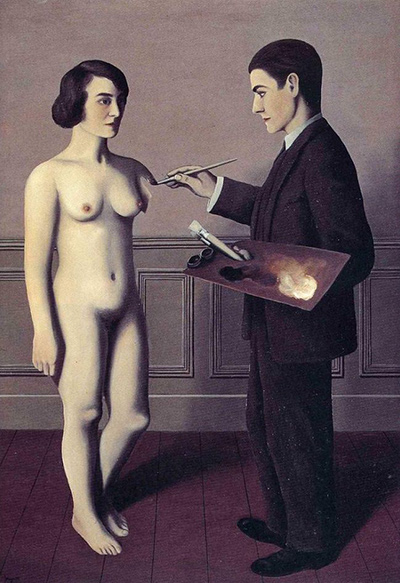Women and bold colors tend to dominate most of Rene Magritte’s early paintings. In the painting Attempting the Impossible, Rene Magritte shows himself to painting a naked woman into thin air.
He used a surrealism style to paint the Attempting the Impossible during the surrealist Paris years in 1928. The symbolic painting was painted using oil and canvas. It measured 81 x 105.6 cm.
He was very creative in displaying ordinary objects as the case in the Attempting the Impossible by giving them a new meaning to try and alter the audience’s perspective. He made the audience look at him from a different perspective and perceive the ordinary life differently.
In the mid-1920s he decided to abandon the abstraction style and started painting objects with their visible objects. The latter style was a bit challenging because he decided to challenge the world or nature by painting objects or situations in strange displays. In a paradox and contrast motif, Magritte started painting in such a manner that he brought two or more concepts together and hybridize them by creating a new concept from each of them. For instance, a night landscape was made to look like it’s shining under a day-lit sky in the work The Empire of Lights.
René Magritte was a Belgian surrealist artist who was born 1898 in Belgium. He was known for painting witty and thought-provoking images by using simple graphics of everyday imagery. In the mid-1920s he quit his commercial advertising job to concentrate on full-time painting and went ahead to be celebrated in various international exhibitions.
Although Magritte’s first style of painting was impressionist, he enrolled at Académie Royale des Beaux-Arts where he studied for two years. In the institution, he learned other styles of the art such as cubism and futurism that transformed his style of artwork. Most of the artworks of the 1920s were influenced by the talented Pablo Picasso.




